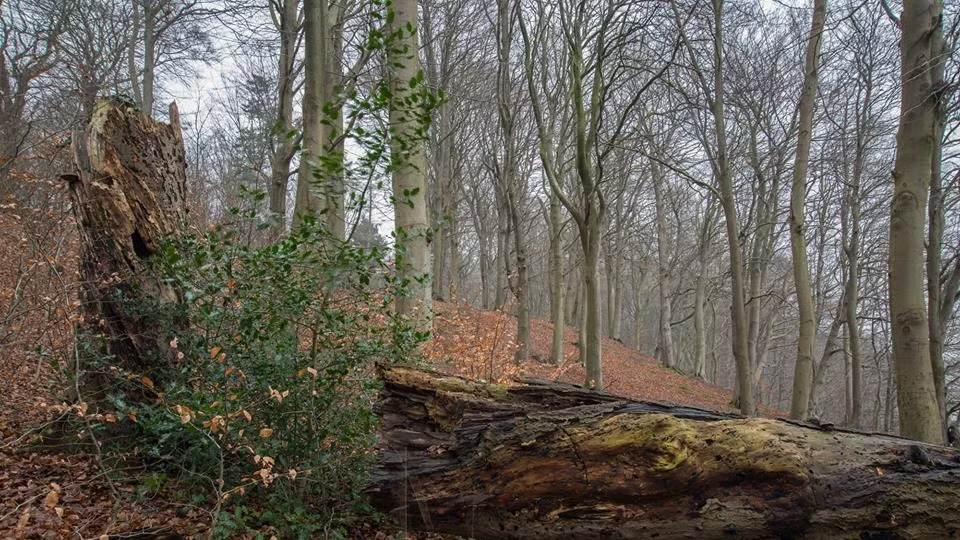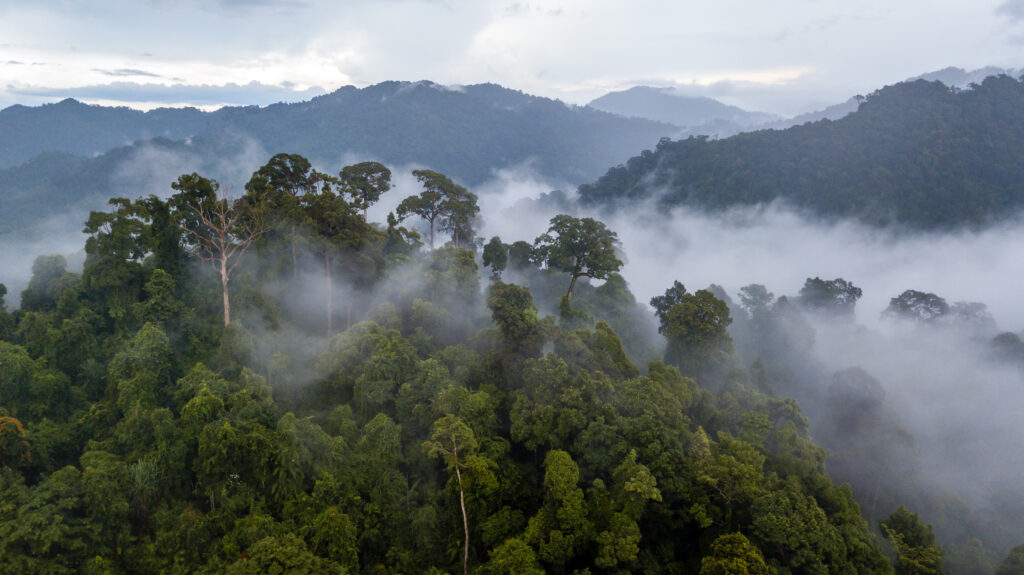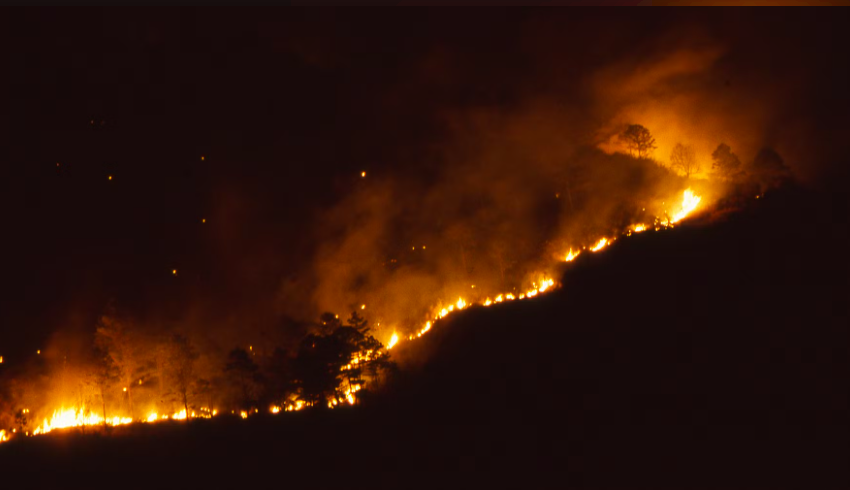Through your purchase of a Danish forest certificate from Forests of the World, you are helping ensure that the Danish Nature Fund acquires Danish forests where nature will be prioritized in the future. These will be forests where everything will take place on nature’s terms for all time. One such forest the Nature Fund has already purchased is Kollund Forest.
Kollund Forest in Southern Jutland, right by the German border, is an example of one of the few remaining areas in Denmark that has been covered by forest since the last Ice Age. The Danish Nature Fund bought Kollund Forest in September 2017.
The forest features a remarkable landscape with large, old deciduous trees rising on steep slopes and deep ravines overlooking the Flensburg Fjord.
There has likely always been forest along the coast between Kollund and Kruså. Today, there are only a few areas in Denmark with original forests, but these are of great ecological value. Many species of fungi, mosses, lichens, insects, plants, and other organisms tied to the original broadleaf forest have had the chance to survive here in Kollund without disturbance.
Most of Kollund Forest is deciduous, with a predominance of beech and oak. The beech tree migrated to Denmark at least 3500 years ago and has probably been the dominant tree species in Kollund Forest for thousands of years. The forest’s many ancient beech trees with holly undergrowth represent a forest type characteristic of well-developed beech forests in Eastern Jutland.
The areas with old deciduous forest will now and forever be allowed to care for themselves – in other words, they will become untouched forest. The conifers that were previously planted in various parts of the forest will be removed in the coming years. The Nature Fund will also attempt to restore the natural water level in Kollund Forest by closing drains. The goal is to recreate a natural forest with native tree species, forest mosses, and streams.
Mountain Salamander and Black Woodpecker
Two very special and rare animal species that can be found in Kollund Forest are the mountain salamander and the black woodpecker.
In Denmark, the mountain salamander lives only in Kollund Forest and a few other places in Southern Jutland. It breeds in ponds from mid-March to early July and then moves onto land. The rest of the year, the mountain salamander spends in the forest floor, where it is difficult to spot. It feeds on insects, larvae, snails, and earthworms. The mountain salamander has a grey-brown or bluish body with bright colours on the underside, which can vary from yellow to orange or red. The female grows up to 12 cm, while the male reaches up to 9 cm.
The black woodpecker typically drums 20 times in 2 seconds, and it can be heard from several kilometers away! It is a jet-black bird, the largest woodpecker species in Denmark – about the size of a crow. It has a red cap (male) or a small red crown (female) on its head. The black woodpecker is relatively rare in Denmark but can be found in the forests by the Flensburg Fjord. The bird primarily feeds on ants and breeds in a nesting chamber it carves out high up on the trunk of a large tree, usually a beech tree.
If you would like to experience Kollund Forest and its wildlife and plant life, you are welcome to visit it around the clock. Read more about Kollund Forest and the access rules.
Would you like to help secure more Danish forests with space for wild animals and where nature can unfold? Then buy a forest certificate.
Press Contact
Jonas Schmidt Hansen
Who is Forests of the World?
We work to preserve the world’s forests, both in Denmark and the world’s tropical forests.Our focus areas include sustainability, Indigenous Peoples and local engagement.




